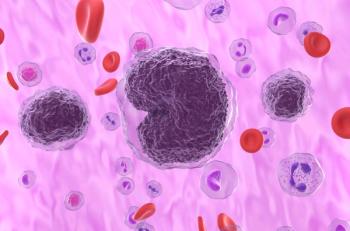
Alopecia Areata Linked to Autoimmune, Psychiatric Risks
Patients with alopecia areata have a significantly increased risk of developing psychiatric and autoimmune diseases both before and after diagnosis, highlighting the importance of comprehensive care for these individuals.
Patients with
Research has found links between genetic and environmental factors in relation to AA that have suggested an upregulation of inflammatory cytokines that signal through Janus kinases (JAKs) and potentially other pathways.
Inflammatory pathways have been recognized in various autoimmune diseases like rheumatoid arthritis, inflammatory bowel disease, and psoriasis, which have all been linked to AA.
There is a 16% increased risk that people with AA will also have autoimmune disease like vitiligo, lupus erythematosus, and thyroid disease.2 An estimated 39% of patients with AA also have atopic dermatitis, a form of eczema.
Additionally, results from a Mendelian randomization study found patients with AA had a higher risk of atopy and allergies, specifically hay fever, eczema, asthma, and allergies to pollen, dust, and cats.3
Despite evidence linking AA and psychiatric or autoimmune disorders, research has yet to identify the risks of developing psychiatric and autoimmune comorbidities in patients with newly diagnosed AA.1
“There remains a lack of evidence of the comorbidity burden among those with AA in the US, particularly that of new-onset comorbidities after AA diagnosis,” relayed the study authors.
The retrospective cohort analysis collected data between January 1, 2007, and April 30, 2023. At baseline, the prevalence of psychiatric or autoimmune comorbidities was assessed among patients diagnosed with AA and the control group. The statistical analysis matched patients with AA to the control group based on sex, age, and geographic region.
Prevalence of Related Diseases
Baseline data included 63,384 patients with AA (62.4% female vs 37.6% male) and a significantly larger control group of 3,309,107 individuals without AA (52.1% female vs 47.9% male). Patients with AA had a mean age of 39.3 years vs 39.8 in the control group.
Any condition considered a psychiatric disease had an overall prevalence of 30.9% in patients with AA compared with 26.8% in the control group (P < .001).
Patients with AA exhibited significantly higher rates of anxiety (15.5% vs 12.3%), sleep disturbance (10.4% vs 8.9%), and depression (9.3% vs 7.6%) compared with the control group (P < .001).
The overall prevalence of any autoimmune or immune-mediated disease was 16.1% for patients with AA and 8.9% for the control group (P < .001). Patients diagnosed with AA had higher rates of atopic dermatitis (5.1% vs 2%), psoriasis (2.4% vs 1.2%), and rheumatoid arthritis (2.3% vs 1.3%) (P < .001) compared with the control group.
Incidence of Related Diseases
There were 16,512 patients in the AA group after matching and 66,048 in the control group. The population had a mean age of 36.9 years, and 50.6% were female.
For the first 12 months following AA diagnosis, the overall incidence of any psychiatric disease was 10.2% for patients with AA and 6.8% for the control group (P < .001). The highest incidence among psychiatric diseases for patients with AA compared with the control group was seen for anxiety (4.0% vs 2.6%), sleep disturbance (2.6% vs 1.7%), and depression (1.9% vs 1.2%) (P < .001).
The incidence of any autoimmune or immune-mediated disease for the first 12 months of diagnosis was 6.2% for patients with AA and 1.5% for the control group (P < .001). Autoimmune and immune-mediated disorders with the highest incidence for patients with AA vs the control group included atopic dermatitis (2.2% vs 0.3%), vitiligo (1% vs 0.1%), and psoriasis (0.9% vs 0.2%) (P < .001).
There was a significantly higher risk of patients with AA developing a psychiatric (adjusted HR [AHR], 1.3; 95% CI, 1.3-1.4) or autoimmune (AHR, 2.7; 95% CI, 2.5-2.8) comorbidity compared with the control group. Adjustment disorder (AHR, 1.5; 95% CI, 1.3-1.6; P < .001), panic disorder (AHR, 1.4; 95% CI, 1.2-1.7; P < .001), and sexual dysfunction (AHR, 1.4; 95% CI, 1.1-1.8; P = .003) were among the psychiatric disorders with the highest risk. The most common autoimmune and immune-mediated disorders included systemic lupus erythematosus (AHR, 5.7; 95% CI, 4.6-7.2; P < .001), atopic dermatitis (AHR, 4.3; 95% CI, 3.9-4.8; P < .001), and vitiligo (AHR, 3.8; 95% CI, 3.2-4.4; P < .001).
Limitations
Study limitations include the inability to establish causality and reliance on diagnostic codes for comorbidity assessment without corroborating data. Additionally, the results may not be generalizable to those with insurance types other than commercial health coverage. Furthermore, the absence of disease severity and burden assessments could underestimate comorbidity risk.
“Routine monitoring of patients with AA, especially those at risk of developing comorbidities, may permit earlier and more effective intervention,” the study authors concluded.
References
- Mostaghimi A, Soliman AM, Li C, Barqawi YK, Grada A. Immune-mediated and psychiatric comorbidities among patients newly diagnosed with alopecia areata. JAMA Dermatol. Published online July 31, 2024. doi:10.1001/jamadermatol.2024.2404
- Alopecia areata overview: types, causes, symptoms, and treatment. Pfizer. Accessed August 18, 2024.
https://www.pfizer.com/disease-and-conditions/alopecia-areata#:~:text=People%20with%20alopecia%20areata%20face - Santoro C. Alopecia areata risk associated with atopy, allergies. AJMC®. May 13, 2024. Accessed August 18, 2024.
https://www.ajmc.com/view/alopecia-areata-risk-associated-with-atopy-allergies
Newsletter
Stay ahead of policy, cost, and value—subscribe to AJMC for expert insights at the intersection of clinical care and health economics.













































